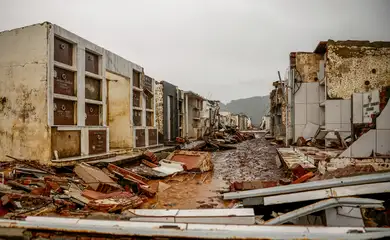Rio Grande do Sul: Rain damage reaches BRL 88.9B

The Inter-American Development Bank (IDB) delivered a report titled Assessment of the Effects and Impacts of Flooding in Rio Grande do Sul - November 2024 to the Ministry of Integration and Regional Development in Brasília. The report estimates the damage caused by the floods in the municipalities of the Brazilian state at BRL 88.9 billion and provides strategic recommendations for recovering areas affected by the heavy rains in April and May of this year.

The IDB report was produced in collaboration with the Economic Commission for Latin America and the Caribbean (ECLAC) and the World Bank Group, in partnership with various entities of the United Nations System. The calculation was based on the international methodology known as Damage and Loss Assessment (DaLA) for disasters, developed by ECLAC.
Regarding the projected impact of the public calamity on the state's Gross Domestic Product (GDP) by 2024, economic activity is forecasted to decline by 1.3 percent.
The president of the Inter-American Development Bank, Ilan Goldfajn, highlights the response of public authorities in mitigating the economic impacts of the floods, as noted in the report.
“It is worth noting that, without the Brazilian government's actions—such as transfers to individuals and resource allocation to state and municipal governments—the impact on GDP would have been 2.4 percent. In other words, these measures reduced the disaster's impact on GDP by 1.1 percent,” the report states.
The Minister for Integration and Regional Development, Waldez Góes, observed that some economic sectors recovered more quickly, while others will take longer to regain stability. “This reflects the scale and intensity of the disaster,” he said.
He pointed out that the Brazilian government has always been involved in the reconstruction of Rio Grande do Sul, as immediate and urgent action was needed, including assistance and protection for those affected, the guarantee of Reconstruction Aid, and the restoration of services. According to the minister, now is the time to move forward with protective infrastructure projects.
Recommendations
The document delivered by the IDB on Thursday (Nov. 28) recommends, among other short-term actions:
- Prioritize the reconstruction of resilient structures to mitigate floods and minimize their impacts, such as dykes with standardized heights and efficient pumping and drainage systems;
- Implement flood control measures to safeguard populations in high-risk areas, including the construction of retention basins and retaining walls;
- improve early warning and emergency management systems;
- Update maps of risk areas and designate regions where rebuilding homes should be prohibited;
Medium-term suggestions include:
- Maintain risk management as a long-term public policy and establish a formal technical-scientific body dedicated to risk identification;
- Enhance coordination among government bodies across various levels and municipalities, prioritizing effective risk management;
- Update master plans to account for the potential overloading of local infrastructure during flooding events.







